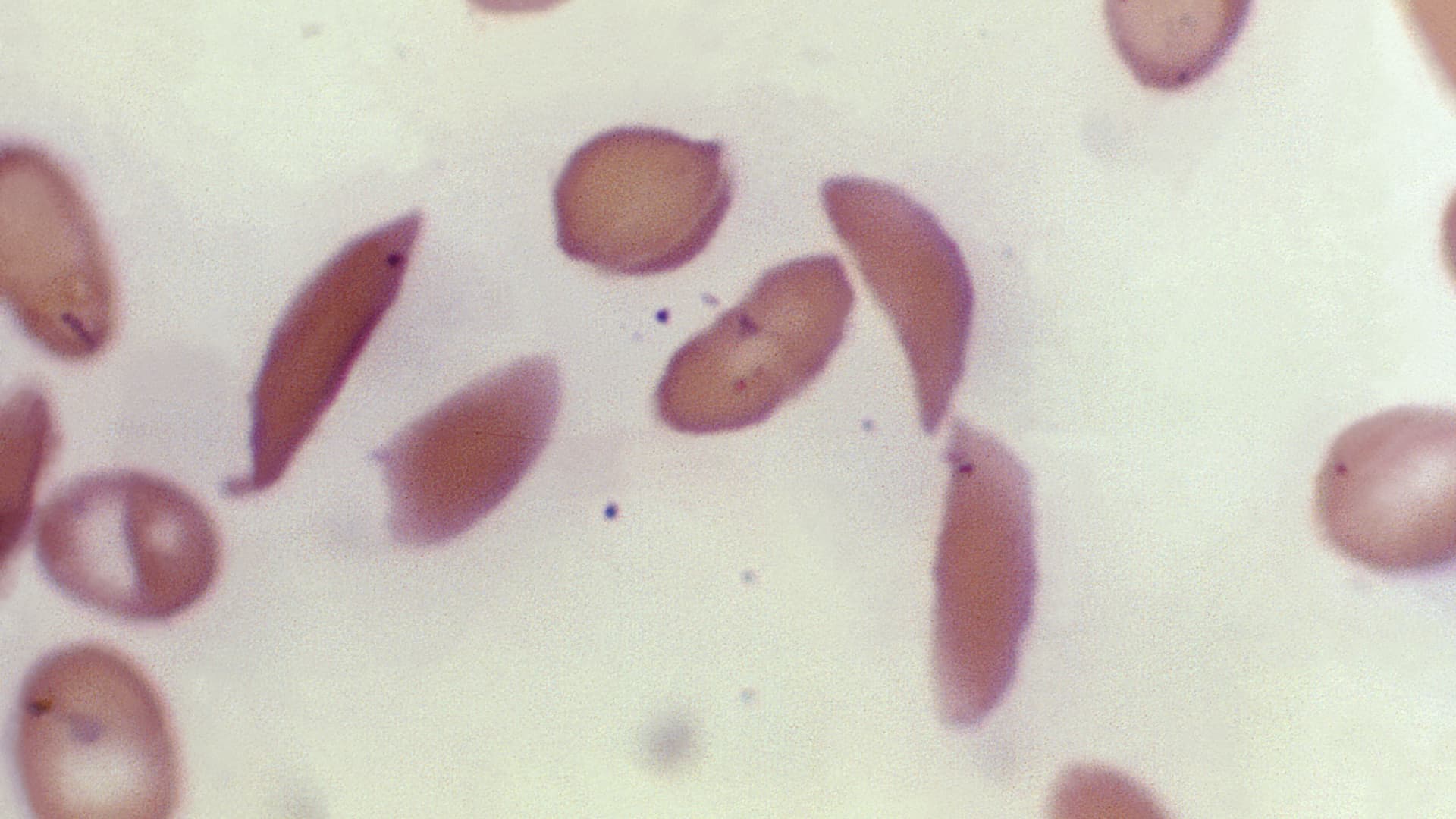Blood sample tube with blood for Sickle Cell Screen -Test. Sickle cell blood test, abnormal hemoglobin test.
Md Babul Hosen | Istock | Getty Images
The U.S. Food and Drug Administration on Friday approved the country’s first gene-editing treatment, Casgevy, for use in patients with sickle cell disease.
The approval comes about a decade after the discovery of CRISPR technology for editing human DNA, representing a significant scientific advancement. Yet reaching the tens of thousands of people who could benefit from the treatment could be challenging given the potential hurdles — including cost — of administering the complex therapy.
Casgevy, co-developed by Vertex Pharmaceuticals and CRISPR Therapeutics, uses Nobel Prize-winning technology CRISPR to edit a person’s genes to treat disease. The treatment was approved by U.K. regulators last month.
Sickle cell, an inherited blood disorder, causes red blood cells to become misshapen half moons that get stuck inside blood vessels, restricting blood flow and causing what are known as pain crises. About 100,000 Americans are estimated to have the disease.
This microscope photo provided on Oct. 25, 2023, by the Centers for Disease Control and Prevention shows crescent-shaped red blood cells from a sickle cell disease patient in 1972. Britain’s medicines regulator has authorized the world’s first gene therapy treatment for sickle cell disease, in a move that could offer relief to thousands of people with the crippling disease in the U.K.
Dr. F. Gilbert/CDC via AP, File
Casgevy uses CRISPR to make an edit to a person’s DNA that turns on fetal hemoglobin, a protein that normally shuts off shortly after birth, to help red blood cells keep their healthy full-moon shape. In clinical trials, Casgevy eliminated pain crises in most patients.
The FDA approved the treatment for people 12 years and older.
“Sickle cell disease is a rare, debilitating and life-threatening blood disorder with significant unmet need, and we are excited to…
Read the full article here

Leave a Reply